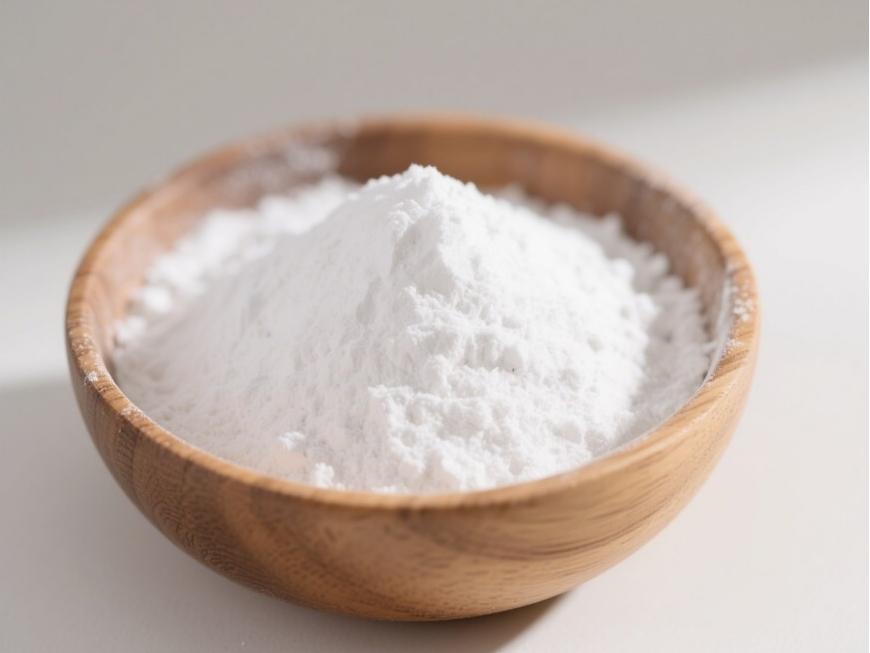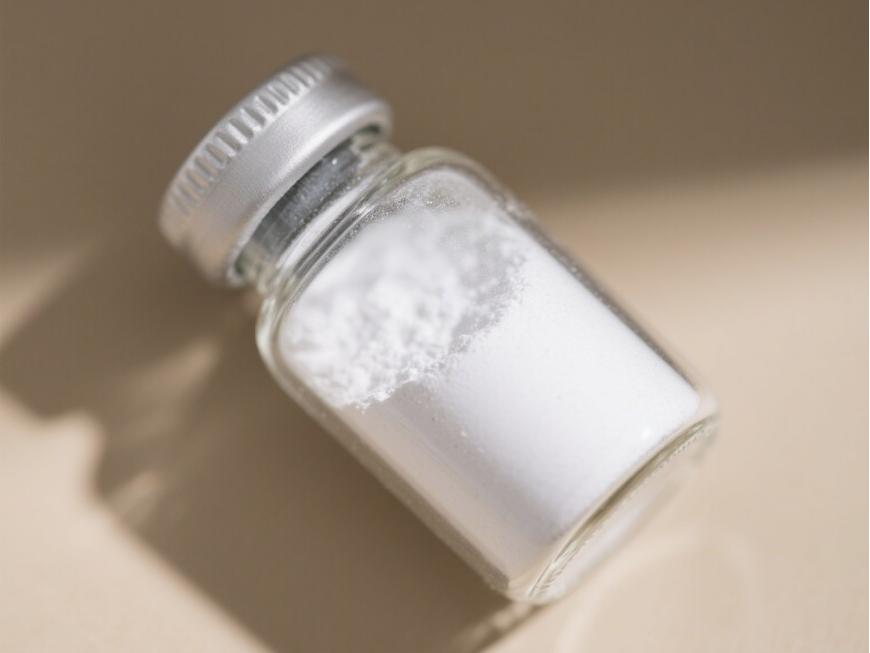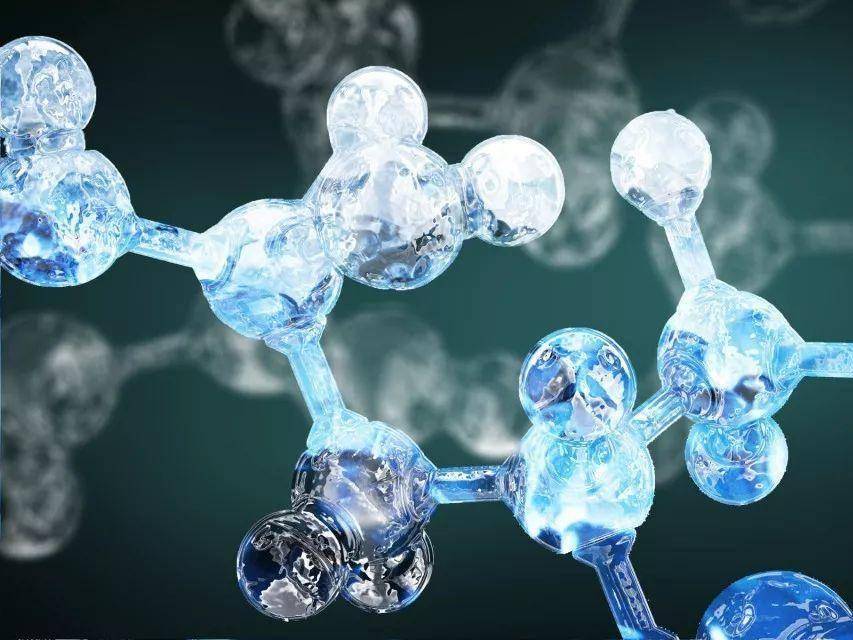How to Produce Hyaluronic Acid Powder by the Fermentation Method?
Hyaluronic acid (HA) is a macromolecular polysaccharide that was first isolated and purified from the vitreous humor of cattle by Meyer and others in 1934, hence its other name, hyaluronan [1]. Hyaluronic acid is a homogeneously repeating linear glucosamine polysaccharide composed of 2,000 to 25,000 disaccharides of glucuronic acid and N-acetylglucosamine alternately bound by β-1,3 glycosidic bonds and β-1,4 glycosidic bonds [2].
Hyaluronic acid is an important component of the extracellular matrix (ECM) [1]. Recent studies have shown that hyaluronic acid is not only widely present in the extracellular matrix between cells, but also exists inside the cell, mainly concentrated in the cytoplasm and nucleus of newborn cells [2]. In addition to being found in the vitreous body, hyaluronic acid is also abundant in the synovial fluid of joints and in the spaces between epidermal cells. In terms of quantity, more than 50% of hyaluronic acid is found in the dermis and epidermis of the skin, and about 35% is found in muscles and bones. It is currently believed that hyaluronic acid is mainly found in the inert space filler of soft connective tissue, and plays an important role in the formation of proteoglycan complexes [2].
1 Properties of hyaluronic acid
Under the electron microscope, hyaluronic acid molecules are observed to have a linear single-chain structure, and they expand into a random coil structure in an aqueous solution, with a coil diameter of about 500 nm. Each disaccharide unit in the hyaluronic acid molecule contains a carboxyl group, which can dissociate under physiological conditions to form an anion. The mutual repulsion between the anions at equal spatial distances causes the molecule to be in a loose extended state in an aqueous solution, occupying a large amount of space, so it can bind more than 1,000 times its own weight in water [3].
Depending on the source and extraction method of hyaluronic acid, its relative molecular mass (Mr) is 8×105 to 5×106[4]. The structure and biological activity of hyaluronic acid are dependent on its relative molecular mass. Low-molecular-weight hyaluronic acid forms a fragmented network at low concentrations, while high-molecular-weight hyaluronic acid forms a complete network[3].
Due to the hydrogen bonds within the molecule, hyaluronic acid molecules adopt a single-helix structure in aqueous solution [5]. When the hyaluronic acid concentration in the solution reaches a certain level, the hyaluronic acid molecules interact with each other to form a double-helix structure, and a network structure is formed at higher concentrations [3]. The currently accepted theory of hyaluronic acid structure is the tertiary structure theory, which states that each trisaccharide unit in a hyaluronic acid molecule has a hydrophobic region. When the solution concentration is high, the hydrophobic regions of the hyaluronic acid molecules interact to form a double-helix structure, which is the basis for the aggregation of hyaluronic acid molecules [6].
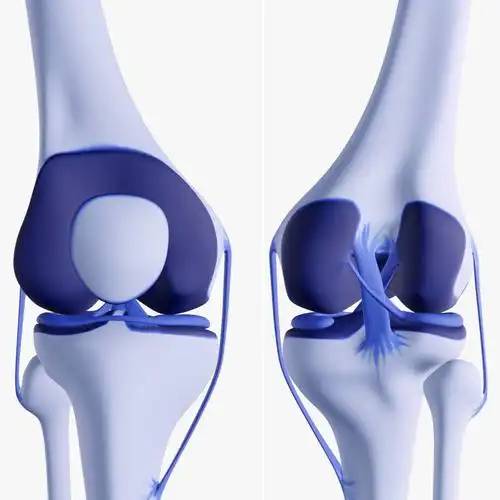
Hyaluronic acid is characterized by its very high viscosity[2]. At low concentrations or low relative molecular masses, the viscosity of the solution changes little with increasing concentration or Mr. When the viscosity reaches 10 mPa·s after the Mr and concentration increase, the hyaluronic acid molecules begin to intertwine, at which time the viscosity increases rapidly with increasing Mr and concentration[3].
2 Production technology of hyaluronic acid powder
There are three reported production techniques for hyaluronic acid powder, namely extraction, microbial fermentation and synthesis [1].
The extraction method involves extracting hyaluronic acid from human or animal tissues [1]. The extraction method was the first method used to produce hyaluronic acid. Currently, the main raw materials used in production are chicken combs, human umbilical cords and animal eyes. The main process steps include extraction, impurity removal, enzymatic hydrolysis, precipitation and separation. The extraction and purification processes for hyaluronic acid from different tissues differ to some extent [3]. However, due to the limited source of raw materials for the extraction method, the product extraction rate is extremely low (only about 1%), and the process is complex, so it is difficult to reduce production costs. In addition, because hyaluronic acid is combined with other high molecular substances in animal tissue, it is more difficult to separate and purify, and hyaluronic acid products extracted from animal tissue may cause infection. These factors limit the wide application of the extraction method in industries such as medicine and cosmetics [2, 3].
The synthetic method involves first synthesizing a “hyaluronic acid oxaziridine derivative” using a biological macromolecule, then adding water and hyaluronidase from the testes of sheep or cattle to prepare a complex of the derivative and the enzyme, and finally removing the enzyme to purify the hyaluronic acid [1]. The synthetic method is still in the laboratory research stage and has not yet been applied to industrial production [1].
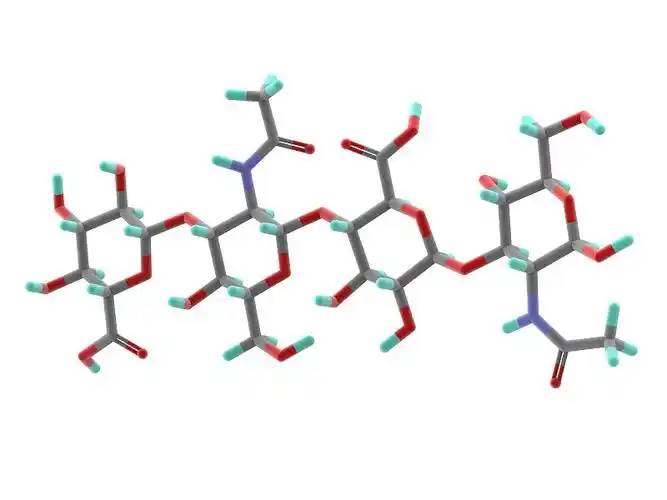
The microbial fermentation method refers to the use of screened bacteria to carry out fermentation and culture, and the hyaluronic acid product is obtained by isolating and purifying it from the fermentation broth [1]. Due to the above disadvantages of the extraction method and the fact that the synthetic method is not yet mature, the microbial fermentation method has become the most important method for producing hyaluronic acid. The following is a more systematic overview of the microbial fermentation method for producing hyaluronic acid powder.
2.1 Breeding of hyaluronic acid-producing bacteria
The earliest discovered microorganism to produce hyaluronic acid was Streptococcus pyogenes, which was discovered in 1937 to be able to produce hyaluronic acid [7]. Subsequently, in 1939, it was discovered that Streptococcus equisimilis and S. zooepidemicus were also able to produce hyaluronic acid [7]. Since wild-type Streptococcus can produce hyaluronic acid, equisimilis) and Streptococcus zooepidemicus (S. zooepidemicus) were also found to be able to produce hyaluronic acid [7].
Since wild-type Streptococcus has disadvantages such as the ability to produce hyaluronidase, express other extracellular proteins, and low hyaluronic acid production [2], wild-type strains must be modified by various means in actual production to meet the needs of industrial production.
2.1.1 Mutagenesis breeding
Mutagens mainly include physical mutagens, chemical mutagens and biological mutagens. At present, the mutagens used in the breeding of hyaluronic acid-producing strains mainly include ultraviolet light, 60Co γ rays and nitroguanidine (NTG) [7]. Many research reports have shown that by treating some original strains that can produce hyaluronic acid, such as Streptococcus zooepidemicus and Streptococcus equi, with various mutagenic treatments, excellent strains with high hyaluronic acid production, or relatively high molecular weight hyaluronic acid, or negative reactions after pre-treatment with hyaluronidase, or non-hemolysis, or a combination of the above characteristics can be obtained [7].
2.1.2 Protoplast culture
Since protoplasts have no cell walls, they are more sensitive to changes in environmental conditions than ordinary cells and respond more strongly to mutagenic treatments [7]. Successful experiments have been carried out using chemical mutagens such as NTG or physical mutagens such as lasers to treat protoplasts of original strains to obtain high-yielding strains [7].
2.1.3 Genetic engineering breeding
The gene encoding the enzyme involved in the hyaluronic acid synthesis pathway in Streptococcus is located on a single reverse transcriptase and is called the has operon. In Streptococcus pyogenes, the has operon consists of three genes: hasA (1248 bp), encoding hyaluronic acid synthase (42.0 U), hasB (1204 bp), encoding UDP-glucose dehydrogenase (47.0 U), and hasC (915 bp), encoding UDP-glucose pyrophosphorylase (33.7 U) [2]. Although it is not yet clear how hyaluronic acid chains are transported across the cell membrane, the expression of hyaluronic acid synthase and UDP-glucose dehydrogenase in Enterococcus faecalis, Escherichia coli and Bacillus subtilis is sufficient to direct hyaluronic acid production and transport [2]. Therefore, hyaluronic acid can be produced simply by transferring the hasA and hasB genes into the host cell and having them expressed in the host cell [7].

The HA synthesis gene of the mucoid GAS strain S43/192/4 of Streptococcus agalactiae group A was first cloned and constructed into an Escherichia coli plasmid in 1993, and successfully expressed in E. coli to synthesize HA [8]. Subsequently, the HA synthesis gene of Streptococcus agalactiae group C was cloned and expressed in E. coli in 1997 [8].
Ling Min et al. [9] amplified the sqhas gene from the total DNA of Streptococcus equi subsp. zooepidemicus, constructed an expression plasmid and transformed it into E. coli DH5α, successfully expressed the sqHAS protein, and synthesized HA in the presence of a substrate. Zhang Jinyu et al. [10] cloned the hasB gene of Streptococcus zooepidemicus and expressed it in E. coli to obtain the corresponding protein.
The Chien research group in Taiwan Province of China introduced the hasA and hasB genes of Streptococcus zooepidemicus into Lactococcus lactis through the NICE inducible expression system, and successfully obtained an engineered strain that produces hyaluronic acid [11].
Sheng Juyu[12] introduced the Streptococcus zooepidemicus hyaluronan synthase gene into Lactococcus lactis through the NICE (nisin-controlled gene expression system) inducible expression system and successfully expressed it to synthesize HA.
2.2 Optimization of fermentation conditions
Streptococci are bacteria with demanding nutritional requirements that need to grow on nutrient-rich media. Streptococci usually grow on complex media containing a mixture of yeast or animal extracts, peptone and serum. The formulation of these media always includes glucose (10–60 g/L), amino acids, nucleotides, a large amount of salt, trace minerals and vitamins [2].
The pH and temperature are very important for the growth of Streptococcus zooepidemicus and the production of hyaluronic acid. Some studies have shown that the conditions of pH 6.7 ± 0.2 and temperature 37 °C are most suitable for the growth of Streptococcus zooepidemicus and the production of hyaluronic acid [13]. The stirring rate also affects the production of hyaluronic acid. Studies have shown that under conditions of low agitation rates, lactic acid production is high and hyaluronic acid production is low [13]. High-speed agitation can reduce the effect of lactic acid synthesis and increase hyaluronic acid production, but it can also destroy hyaluronic acid polymers and reduce their relative molecular mass [13]. The initial glucose concentration has a significant effect on the relative molecular mass of hyaluronic acid. Research shows that when the initial glucose concentration is increased from 20 g/L to 40 g/L, the relative molecular mass of hyaluronic acid also increases from (2.1±0.1)×106 to (3.1±0.1)×106 [13].
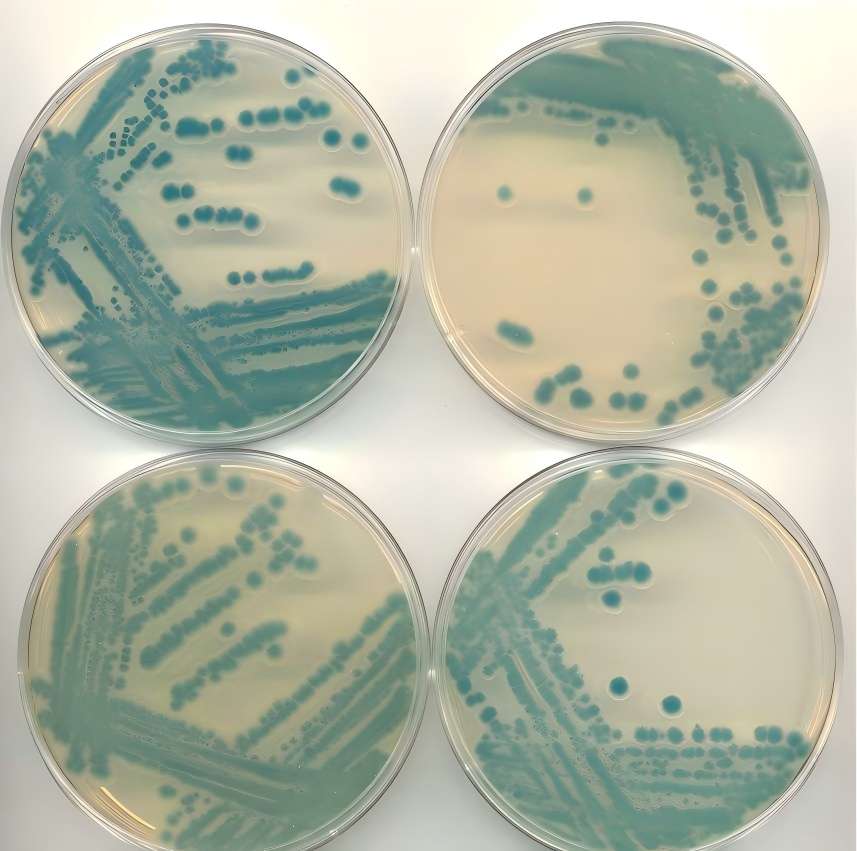
Liu et al. [14] reported that during batch fermentation of Streptococcus zooepidemicus, hydrogen peroxide (1.0 mmol/g HA) and ascorbic acid (0.5 mmol/g HA) were added at 8 h and 12 h, respectively, to cause the redox depolymerization of hyaluronic acid, resulting in a decrease in relative molecular mass and The yield increased from 5.0 g/L to 6.5 g/L.
3 Applications of hyaluronic acid
Due to the many properties of hyaluronic acid mentioned above, it has been widely used in many fields. The following mainly summarizes the application of hyaluronic acid in cosmetics, health products and medical and pharmaceutical fields.
3.1 Application of hyaluronic acid in cosmetics
Hyaluronic acid is mainly found in the extracellular matrix between cells, where it has the function of maintaining the extracellular space of tissue cells, accelerating the flow of nutrients, and maintaining the tissue. First, compared with traditional moisturizers, hyaluronic acid has a better moisturizing effect and has the advantages of being non-greasy and not clogging pores. Second, an aqueous solution of hyaluronic acid has strong viscoelasticity and lubricity, which helps to form a breathable moisturizing film on the skin surface to keep the skin moisturized. Third, small molecules of hyaluronic acid can enter the dermis, promote blood microcirculation, and help the skin absorb nutrients, which can have a cosmetic and health-promoting effect. Finally, hyaluronic acid can remove active oxygen free radicals in the skin caused by ultraviolet radiation, providing sun protection and repair[15].
Due to the many advantages of hyaluronic acid, it is widely used in cosmetics as the ideal natural moisturizing factor to moisturize, emollient, anti-wrinkle and sunscreen. The usual addition amount is 0.05% to 0.50% [15].

3.2 Application of hyaluronic acid in health products
Since hyaluronic acid has various properties such as water retention, lubrication, promoting wound healing and protecting cells, a decrease in hyaluronic acid in the body can lead to many problems such as arthritis, skin aging, and increased wrinkles. Therefore, oral supplementation of hyaluronic acid to supplement endogenous hyaluronic acid is currently considered to be one of the effective ways to maintain beauty and health and prolong life [16].
The theoretical basis for oral hyaluronic acid is that after oral digestion, hyaluronic acid can increase the precursors for the synthesis of hyaluronic acid in the body, thereby increasing the amount of hyaluronic acid synthesized in the body and targeting it to tissues such as the skin to exert its effect. At present, a variety of oral hyaluronic acid products have been launched, such as tablets, capsules and oral liquids [16].
3.3 Application of hyaluronic acid in medical treatment
Hyaluronic acid is widely used in ophthalmology, orthopedics and many other medical fields due to its unique viscoelasticity, biocompatibility and non-immunogenicity [17].
For eye diseases, the preferred treatment route is topical ophthalmic administration. For ophthalmic drugs, the bioavailability of the drug is positively correlated with the viscosity of the liquid within a certain range. Increasing the viscosity can prolong the residence time of the drug in the eye and thus improve the efficacy. However, some viscosity enhancers can cause side effects such as eye discomfort. Hyaluronic acid overcomes this drawback due to its non-Newtonian fluid properties and good biocompatibility. It is therefore a good ophthalmic drug viscosity agent that is worth developing and applying [18]. In addition to being used in eye drops, hyaluronic acid can also be used to treat dry eye symptoms. Currently, hyaluronic acid has been used together with a variety of other high-molecular polymers to improve dry eye symptoms [19].
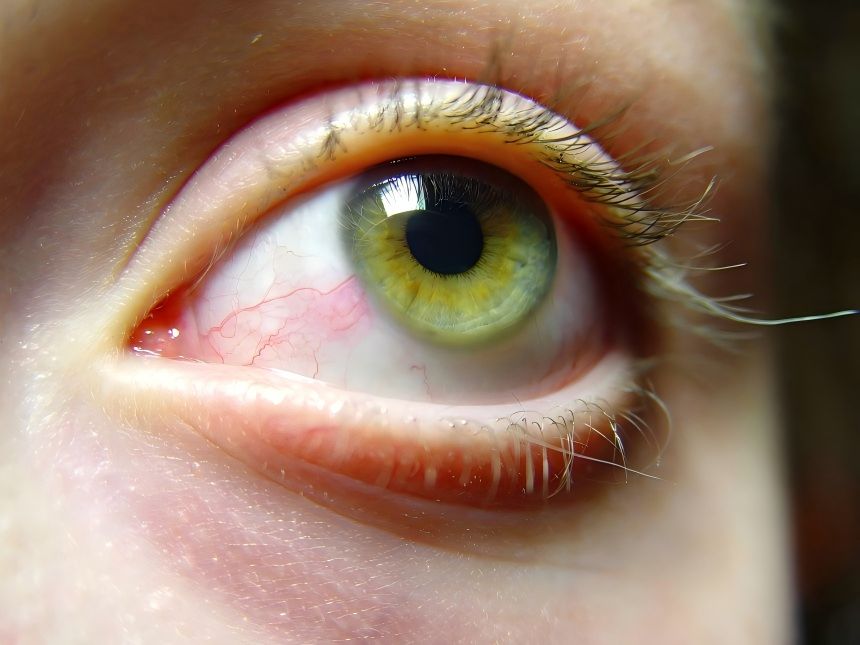
In addition to its presence in the vitreous body, hyaluronic acid is also the main component of articular cartilage and synovial fluid. When the body develops osteoarthritis, rheumatoid arthritis and other joint diseases, the production and metabolism of hyaluronic acid in the joint is abnormal, and the concentration and relative molecular weight of hyaluronic acid in the synovial fluid are significantly reduced, which disrupts cartilage degradation. This has led to the development of viscoelastic complementary therapy, which treats joint diseases by supplementing exogenous hyaluronic acid. This therapy is becoming increasingly popular with doctors and patients alike because of its long-lasting efficacy and few side effects[20].
In addition, hyaluronic acid is also widely used in drug delivery systems as various carriers (such as anti-tumor targeted drug carriers, non-viral vectors for gene therapy, and carriers for peptide and protein drugs), as implant materials in surgery, and in the treatment of recurrent oral ulcers [17].
4 Outlook
As hyaluronic acid is gradually being applied in various fields, the microbial fermentation method for producing hyaluronic acid powder will gradually replace the extraction method and become the main method for the industrial production of hyaluronic acid. The beginning of hyaluronic acid production in a foreign host indicates that the production of hyaluronic acid has entered the stage of applying modern biotechnology. In the future, strains that can produce hyaluronic acid with different relative molecular masses will be selected, and through the continuous optimization of fermentation conditions, hyaluronic acid products that can be used in different fields will be provided. Hyaluronic acid will also be used more and more widely in many fields.
References:
[1] Ling Peixue. Research and application of hyaluronic acid [M]. Beijing: People's Medical Publishing House, 2010. 1- 6.
[2] CHONG B F, BLANK L M, MCLAUGHLIN R, et al. Microbial hyaluronic acid production [J]. Appl Microbiol Biotechnol, 2005, 66(4): 341-351.
[3] Liu Long. Process control and optimization of hyaluronic acid production by Streptococcus zooepidemicus fermentation [D]. Wuxi, Jiangsu: Jiangnan University, 2009.
[4] Jiang Qiuyan, Ling Peixue, Lin Hong, et al. Study on thermal degradation of hyaluronic acid [J]. China Pharmaceutical Industry Journal, 2006, 37(1): 15-16.
[5] STERN R, ASARI A A, SUGAHARA K N. Hyaluronan fragments: An information-rich system [J]. Eur J Cell Biol, 2006, 85(8): 699-715.
[6] BARBUCCI R, LAMPONI S, BORZACCHIELLO A, et al. Hyaluronic acid hydrogel in the treatment of osteoarthritis. Biomaterials, 2002, 23(23): 4503-4513.
[7] Shi Yanli, Guo Xueping, Luan Yihong. Overview of the breeding of hyaluronic acid-producing bacteria [J]. Food and Drugs, 2006, 8(10): 22-24.
[8] Zheng Xueling, Wang Fengshan, Ling Peixue. Research progress of hyaluronic acid synthase [J]. Pharmaceutical Biotechnology, 2004, 11(6): 413-416.
[9] Ling Min, Huang Ribo, Huang Kun, et al. Molecular cloning and expression of the hyaluronic acid synthase gene of Streptococcus equi subsp. zooepidemicus [J]. Industrial Microbiology, 2003, 33(2): 4-8.
[10] Zhang Jinyu, Wu Xiaoming, Hao Ning, et al. Cloning and characterization of the hyaluronic acid synthesis-related gene hasB of Streptococcus zooepidemicus [J]. Chinese Journal of Biotechnology, 2005, 25(7): 86-91.
[11] CHIEN L J, LEE C K. Hyaluronic acid production by recombinant Lactococcus lactis [J]. Appl Microbiol Biotechnol, 2007, 77(2): 339-346.
[12] Sheng J. Establishment of the hyaluronic acid synthesis pathway in Lactococcus lactis and preliminary study on the mechanism of regulating the relative molecular mass of microbial synthesized hyaluronic acid [D]. Jinan: Shandong University, 2009.
[13] SHI Y L, WANG F S, GUO X P, et al. Research survey of hyaluronan production by fermentation [J]. The Proceedings of the China Association for Science and Technology, 2006, 2(4): 268-271.
[14] LIU L, DU G C, CHEN J, et al. Microbial production of low molecular weight hyaluronic acid by adding hydrogen peroxide and ascorbate in batch culture of Streptococcus zooepi- demicus [J]. Bioresource Technology, 2009, 100(1): 362-367.
[15] Guo Fengxian, Ling Peixue, Guo Xueping, et al. Physiological functions of hyaluronic acid and its application in cosmetics and beauty and health foods [J]. China Business Industry, 2002 (9): 45-46.
[16] Song Yongmin, Guo Xueping, Luan Yihong, et al. New resource food – hyaluronic acid [J]. Food and Drugs, 2009, 11(5): 56-59.
[17] Wan Xiuyu, Ling Peixue, Zhang Tianmin. New developments in the research and application of hyaluronic acid [J]. Food and Drugs, 2006, 8(12): 1-3.
[18] Ling Peixue, Guan Huashi, Rong Xiaohua, et al. Research progress of ophthalmic drug delivery systems [J]. Chinese Journal of Pharmacy, 2006, 41(1): 7-9.
[19] Ling Peixue, Zhang Tianmin, Li Qi, et al. Application and research progress of hyaluronic acid in ophthalmic drugs [J]. Chinese Medicine and Clinical, 2004, 4(9): 697-699.
[20] Ling Peixue, He Yanli, Zhang Qing. Therapeutic effect of hyaluronic acid on osteoarthritis [J]. Food and Drugs, 2005, 7(1): 1-3.


 English
English French
French Spanish
Spanish Russian
Russian Korean
Korean Japanese
Japanese